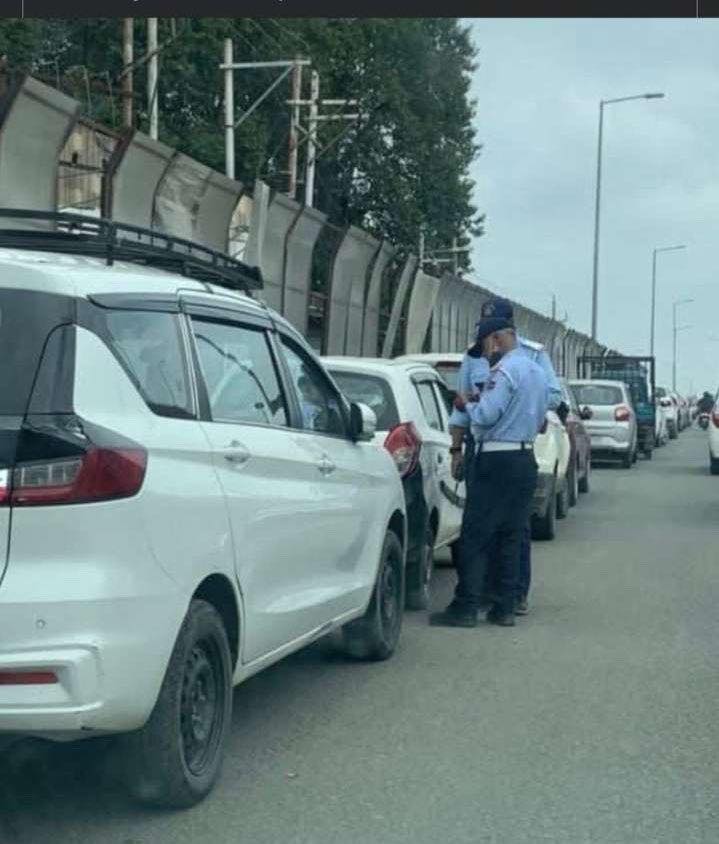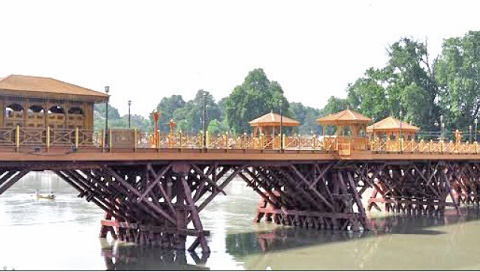If Shame Had a Face: How Kashmir’s Flood Response Turned Into Public Humiliation
By: Javid Amin | 04 Sep 2025
A Crisis of Conscience
When disaster strikes, people look up to their government for protection, relief, and dignity. That’s the foundation of the social contract between citizens and the state. But in flood-hit Kashmir, September 2025, that fragile trust was broken.
As torrential rains battered the Valley, homes went under, roads disappeared, and thousands were displaced. Families scrambled to higher ground with their few belongings, often moving their vehicles—ambulances, vans, scooters—to bridges, embankments, and elevated roads to keep them safe.
Instead of relief, what did they get? Parking fines.
Yes, as floodwater drowned neighborhoods, officers with receipt books found time to issue challans to stranded, terrified citizens. It wasn’t just a lapse in judgment. It was a moral collapse, and if shame had a face, it would be wearing a uniform, drenched in rain, handing out fines in the middle of a flood.
The Floods That Drowned More Than Streets
Unprecedented Rains, Unprepared Response
September 2025 brought one of the wettest monsoon spells in recent memory. The Jhelum River breached danger levels, and in districts like Srinagar, Budgam, and Anantnag, water rushed into homes, fields, and schools. Landslides hit highways, leaving towns cut off.
Data paints a stark picture:
-
Annual Rainfall (2025): 1,200 mm (18% above average)
-
Jhelum River Breach Points: 7 major embankments
-
Families Displaced: 9,000+
-
Relief Centers Activated: Only 34 for a population of millions
The contrast was glaring: while nature was merciless, the administration’s response was either absent or, worse, predatory.
Citizens Left to Fend for Themselves
With rescue boats too few and relief poorly coordinated, families had no choice but to improvise. Vehicles became lifelines:
-
A van doubling as a rescue shuttle in Budgam.
-
Scooters carrying food packets across inundated lanes in Srinagar.
-
Private cars transformed into ambulances for patients.
But instead of gratitude, citizens were slapped with fines.
The Fine Print of Public Humiliation
Fines Amid Chaos
Eyewitnesses and viral videos confirm: traffic officials went around issuing challans to vehicles parked on elevated patches. The official justification? Unauthorized parking.
But what is “unauthorized” when entire cities are drowning? What law applies when the streets are rivers?
Outrage on the Streets and Online
The backlash was immediate. Anger spilled across tea shops, mosques, and social media. Hashtags like #FloodFineScandal, #ReliefOrRobbery, and #KashmirLooted trended nationwide.
One viral comment captured the sentiment:
“Floods drowning people, but the administration found its relief work—issuing fines. What a shame.”
Citizens described it as “state-sponsored looting” and “disaster profiteering.”
Institutional Failure or Systemic Rot?
Where Was Disaster Management?
The State Disaster Response Force (SDRF), municipal bodies, and district administrations were either missing, under-equipped, or overwhelmed. Relief camps were understocked. Rescue boats numbered barely a dozen across the Valley.
But traffic enforcement? Fully functional. With receipt books.
Vote-Bank Urbanism & Flood Mismanagement
Experts say this fiasco cannot be seen in isolation. Kashmir’s urban planning has long ignored ecology and resilience:
-
Wetlands filled for housing (Hokersar, Bemina, Lasjan).
-
Flood channels converted into colonies.
-
Drainage networks choked with construction debris.
The result? Floods that overwhelm the city every few years, leaving citizens punished not only by water, but by the very system meant to protect them.
The Economics of Exploitation
Disaster as a Revenue Stream
In normal times, traffic fines may be justified for order. But in a disaster, they become extortion in uniform.
Who benefits?
-
Citizens: Lose vehicles, pay fines, suffer trauma.
-
Officials: Collect revenue, avoid accountability.
-
The System: Keeps functioning unchecked.
Instead of helping citizens save their property, officials treated their desperation as an opportunity for revenue generation.
Exploitation in Numbers
-
Vehicles Fined During Flood: Estimated 1,200+
-
Average Fine: ₹1,000–₹2,500
-
Revenue Collected: Potentially over ₹1.5 crore in the middle of a disaster.
Voices from the Ground
The human stories behind the scandal are more powerful than any statistic.
-
Farooq Ahmad, Srinagar resident:
“I parked my car on a footbridge to save it from floodwater. They fined me ₹1,000. I asked them where else I should go. They said, ‘That’s not our problem.’” -
Shazia Bano, Budgam:
“We were rescuing neighbors in our van. It got stuck near a bund. We were fined for ‘obstruction.’ We asked for help—they gave us a receipt.” -
Mohammad Yousuf, Anantnag shopkeeper:
“Water was chest-deep in my street. My scooter was on a culvert. When I returned, there was a challan on it. They fined me for trying to survive.”
These testimonies reflect not isolated incidents, but a pattern of humiliation.
The Psychological Toll: When Trust Drowns Too
Disasters destroy not only homes and roads, but also trust. When citizens see their government as predator instead of protector, the scars last generations.
-
Children who watched their parents plead with officers for mercy will never forget that power imbalance.
-
Survivors who were fined for surviving will carry anger instead of trust.
Public administration is not just about rules—it’s about dignity. In 2025, that dignity drowned alongside the Jhelum.
What Needs to Change—Now
-
Immediate Cancellation of All Flood-Period Fines
Refund every citizen fined during the floods. No survival act should be criminalized. -
Independent Inquiry into Enforcement Practices
Investigate who authorized fines during a declared disaster. Accountability must go beyond junior officers. -
Disaster Ethics Protocol
Introduce a mandatory code of conduct across departments—prioritizing human dignity over procedure. -
Strengthen Relief Infrastructure
Boats, shelters, and early warning systems must take precedence over revenue collection. -
Public Apology & Confidence-Building
An official apology, coupled with reforms, is essential to restore faith in governance.
Call to Action: From Outrage to Reform
This editorial is more than a critique—it’s a call.
-
Citizens: Share stories, demand accountability.
-
Journalists: Investigate, amplify ground voices.
-
Activists: Petition for refunds and inquiry.
-
Policymakers: Codify ethics into disaster law.
Floods will come again. But shame does not have to.
Bottom-Line: The Face of Shame, The Hope of Change
If shame had a face, it would be the image of a Kashmiri citizen, drenched in floodwater, clutching a fine receipt instead of relief aid.
But if hope has a voice, it’s in the outrage, the demands, and the courage of ordinary people who refuse to stay silent.
Let this scandal not just be another trending hashtag. Let it be the turning point where Kashmir redefines governance—from exploitation to empathy, from revenue to resilience, from shame to dignity.



